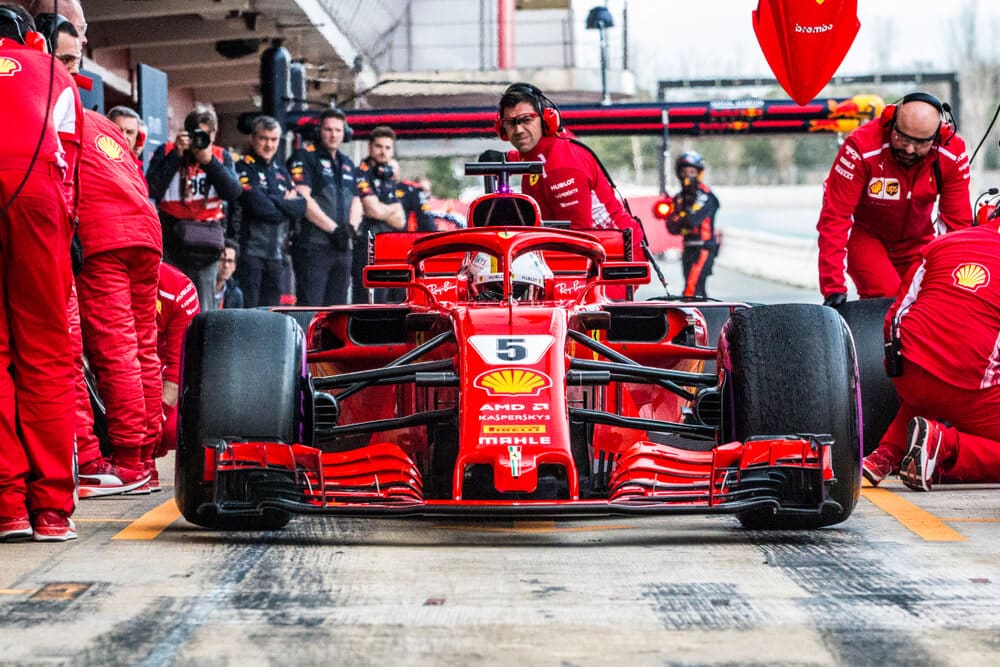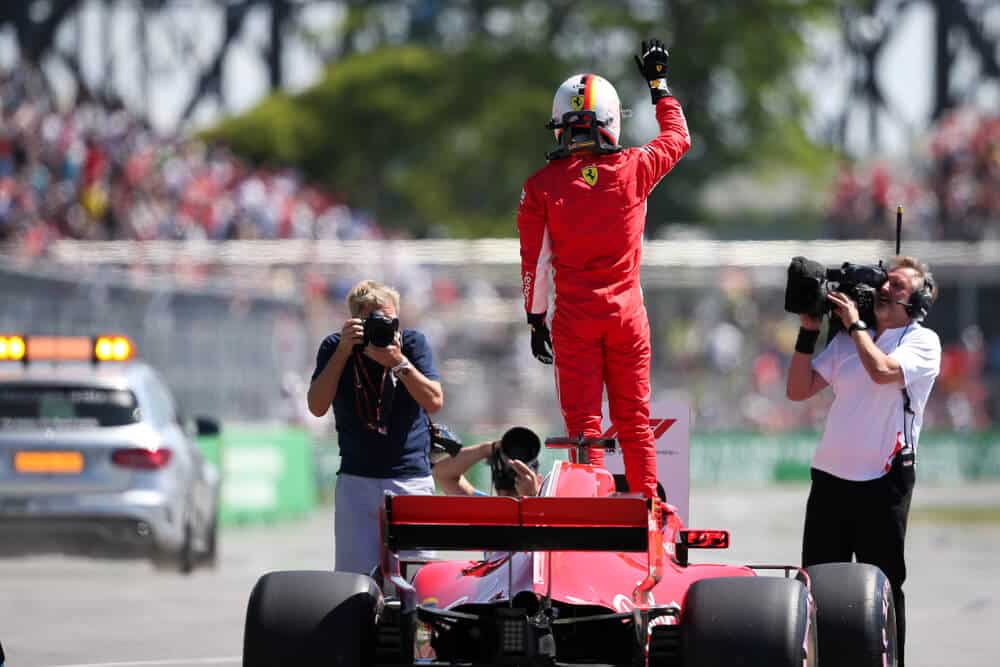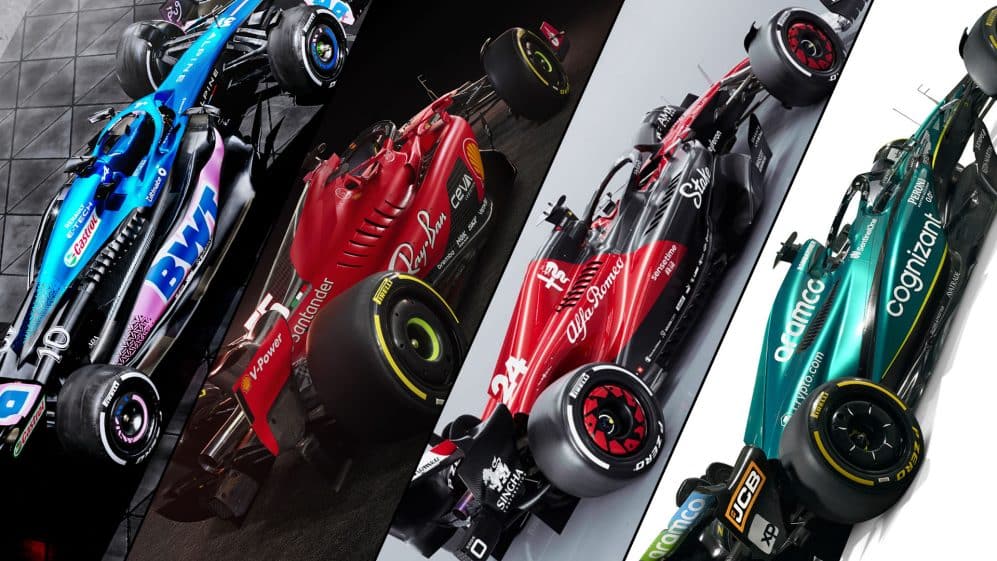Graining in Formula 1 racing is an important concept for drivers and teams alike to understand. It affects the performance of a car and its tires, as well as how teams strategize race strategy and pit stops. You must’ve heard the commentators or your favorite driver talking about graining during a race, but what does it actually mean?
In this article, we’ll explain exactly what is graining and how it affects F1 racing. We’ll also look at some of the causes of graining, as well as strategies that teams use to manage it during a race.
So, if you’re curious to learn more about graining in F1 racing and its impact on the sport, read on!
Table of Contents
Watch this video to learn more about tyre wear in F1.
What is Graining?
Graining is when the surface of a tire becomes rough and irregular. This can affect the grip that the tires have on the track, reducing the performance of the car. The direct cause of graining is said to be friction between the tire and track, and it’s especially prevalent in F1 racing.
Definition and Explanation of Graining in F1
Graining in F1 racing is similar to graining in any other type of racing, but because the cars are traveling at such high speeds and have to make tight turns on a track, they can experience even more wear and tear on their tires.
As the car is going around the track, the friction between the tire and track causes some rubber to flake off, creating small irregular bumps on the tire that reduce grip and cause graining.
Moreover, graining can also be caused by incorrect tire pressure, and poor setup of the car and the track surface. The more graining there is on the tire, the less grip it will have and the slower the car will be.
How Graining Affects Tire Performance
Graining can have a serious impact on the performance of a tire. Here are a few ways it can affect a tire’s performance:
Reduce Grip: When there is graining on the tire, it reduces grip, making it more difficult for the car to turn and accelerate.
Increased Wear: Graining can also cause increased wear on the tires, resulting in faster tire degradation.
Reduce Traction: Graining can also reduce the traction that a tire has, making it more difficult for a car to accelerate out of corners and maintain speed on straights.
Increase Temperature: Graining increases friction, causing tires to heat up faster, increasing temperatures that can damage the tire.
Causes of Graining in F1
Now that we understand what graining is and how it affects F1 racing let’s take a look at some of the causes of graining. There are a lot of complex terminologies and physics that go into understanding the causes of graining, but we’ll try and break it down simply.
Here are some of the main factors that contribute to graining in F1 racing:
Tire Pressure
The first and foremost factor that contributes to graining in F1 racing is tire pressure. Tire pressure is the amount of air pressure inside a tire, and it affects the grip that the tire has on the track.
If the tire pressure is too low, the tire can’t generate enough grip on the track, and graining occurs. On the other hand, if it is too high, the tire will wear down faster due to excessive friction between it and the track. A good balance of tire pressure is essential for any team trying to maximize performance.Set up of car
Another factor that contributes to graining in F1 racing is the setup of the car. When a car is not set up correctly, it can cause excessive wear on the tires due to an imbalance of pressure between the front and rear tires and ultimately lead to graining.
With ever-changing technical regulations, teams must ensure that their cars are set up correctly for each track. This means ensuring the correct suspension, ride height, and downforce levels are used to get the best out of their tires. A good setup helps reduce graining, as it minimizes the impact of friction between the tireUndersteering and Oversteerin
These two terms are used to describe the way a car turns when it is cornering. Understeering occurs when a car doesn’t turn as sharply as the driver would like it to while oversteering is when a car turns more sharply than the driver intended.
Both of these conditions can lead to graining, as the tires are not getting enough grip on the track and are sliding rather than gripping. A good setup helps reduce these issues and keep graining to a minimum.Tire Compound
Tire compound is also a factor that contributes to graining in F1 racing. The type of tire compound used has a huge impact on the amount of grip the tire has on the track. Tire compounds vary from hard to soft, with the softer compounds providing more grip but wearing down faster.
The softer compounds are generally more prone to graining, as the extra grip leads to excessive friction between the tire and track. Finding the correct tire compound is essential in order to optimize performance and minimize graining.
How Track Temperature and Surface Affect Graining
Apart from the factors mentioned above, there are also environmental factors that can contribute to graining in F1 racing.
The track surface and temperature are two of the most important environmental factors. Let’s take a look at what effect each of these has on graining.
Track surface
The track surface is one of the most important factors in determining how much graining there will be.
A good track surface will have a consistent texture, with no bumps or irregularities that can increase car grip. A bad track surface can cause tires to slide rather than grip and lead to graining.
F1 tracks are generally laid with smooth surfaces made of asphalt, and so graining is not as common. However, certain tracks can be more abrasive than others, and this is something teams must bear in mind when setting up their cars.
Track Temperature
The track temperature affects the temperature of the tires, which will in turn impact how much grip they have and how quickly they wear down.
When the track temperature is higher than the tire’s ideal operating temperature, the tires become softer and more prone to graining. This is because the extra heat causes the rubber on the tire to break down faster and creates more friction between it and the track.
On the other hand, when the track temperature is lower than the tire’s ideal operating temperature, the tires become harder and less prone to graining. This is because the rubber on the tire becomes more rigid, reducing the amount of friction between it and the track. But, the tires will also be less grippy and so performance will suffer.
Teams must monitor temperatures and adjust their setup accordingly to optimize performance, minimize graining, and maximize tire life.
The car setup plays a big role in how much graining there will be. Teams can adjust the car's aerodynamics and suspension settings to increase or decrease downforce, which affects the amount of grip on the track. Adjusting the car setup is essential for optimizing performance and minimizing graining.
How Teams and Drivers Deal with Graining in F1
Now that you have a better understanding of the factors that contribute to graining let’s take a look at how teams and drivers work to minimize it. Since graining is an issue that affects performance, they take several steps to reduce its impact.
Strategies for Managing Graining during a Race
Here are some strategies teams and drivers use to manage graining during a race:
- Choosing the right tire compound
As we discussed earlier, the type of tire compound has a huge impact on how much graining there will be. Tire compounds vary from hard to soft, with the softer compounds providing more grip but wearing down faster.
Teams must choose the correct tire compound according to the track conditions in order to maximize performance and minimize graining. - Adjusting car setup
The car setup plays a big role in how much graining there will be. Teams can adjust the car’s aerodynamics and suspension settings to increase or decrease downforce, which affects the amount of grip on the track. Adjusting the car setup is essential for optimizing performance and minimizing graining. - Managing tire temperature
As mentioned earlier, track temperature affects the temperature of the tires, which in turn affects how much grip they have and how quickly they wear down. Managing tire temperature is key to minimizing graining.
Teams can use various techniques, such as cooling the tires during pit stops or adjusting their driving style to manage the temperature of their tires. - Driving style
The way a driver drives also has an impact on graining. Drivers should be aware of how they are affecting the tires, as aggressive driving can generate more heat and lead to increased graining.
By managing their speed and keeping the car smooth through the corners, drivers can reduce graining and optimize performance.
How Teams Monitor and Analyze Graining on Their Tires

Since graining affects performance, teams must monitor and analyze it in order to optimize their setup. Here are some methods they use to do this:
- Visual inspection
Teams inspect each tire visually after a pit stop or after the race to check for signs of graining. Inspecting tires is an important part of understanding how their setup is affecting performance. - Temperature sensors
We already discussed how important it is to manage tire temperature in order to minimize graining. Teams will use temperature sensors in their tires to measure the temperature and help them adjust their setup accordingly. - Wear rate analysis
Teams measure the wear rate of their tires throughout the race to analyze how quickly they are wearing down. This helps them adjust their setup and select the right tire compound for future races.
Impact of Graining in F1 Racing
Now that you understand what graining is, how it occurs, and how teams and drivers manage it, let’s take a look at the impact of graining on Formula 1 racing.
Effects on Race Strategy and Pit Stops
It affects the overall race strategy and the amount of pit stops they take.
If drivers experience graining, they may opt for more frequent pit stops in order to change tires and gain better grip on the track. This can result in the driver falling behind other drivers who have less graining or a better tire compound. This is especially true for shorter races where graining can be a huge factor in the outcome.
Additionally, graining can force drivers to rethink their race strategy if they want to stay competitive.
For example, if they encounter graining they may need to adopt a more conservative driving style in order to manage their tires. This can mean holding back on acceleration or braking more than usual, which can put drivers at a disadvantage compared to other racers.
In general, graining can make F1 racing more unpredictable and challenging for the drivers. It’s an important factor to consider when strategizing for a race and can have a big impact on the eventual outcome.
Impact on Tire Wear and Durability
Another impact of graining on F1 racing is that it reduces the durability and wear rate of tires.
Tire wear and durability refer to how quickly a tire wears down during a race. Generally, tires become worn over time due to their contact with the track surface and any debris they may pick up while racing.
It can significantly reduce the durability of a tire and cause it to wear down much faster than normal. This is because graining affects the tire’s contact patch with the track, reducing its grip and leading to more wear on certain areas of the tire.
Conclusion
So, to summarize, graining is an important phenomenon in Formula 1 racing that can affect a driver’s performance and their race strategy. It can also affect the durability and wear rate of tires, leading to more frequent pit stops and potentially putting drivers at a disadvantage.
Modern tire manufacturers like Pirelli have taken steps to address the issue of graining, blistering, and other major issues in Formula 1 racing. They have developed a range of tires with different compounds and construction, which can help reduce the impact of graining on performance and durability.
We hope this article has given you an insight into the phenomenon of graining in Formula 1 racing and how it affects drivers, teams, and tire manufacturers. So, next time you watch an F1 race, take a look at the tires to see how graining is affecting the performance of your favorite drivers.
Article sources
Learn more about Formula One
Want to learn more about F1? Then visit our Formula 1 glossary and dictionary.



